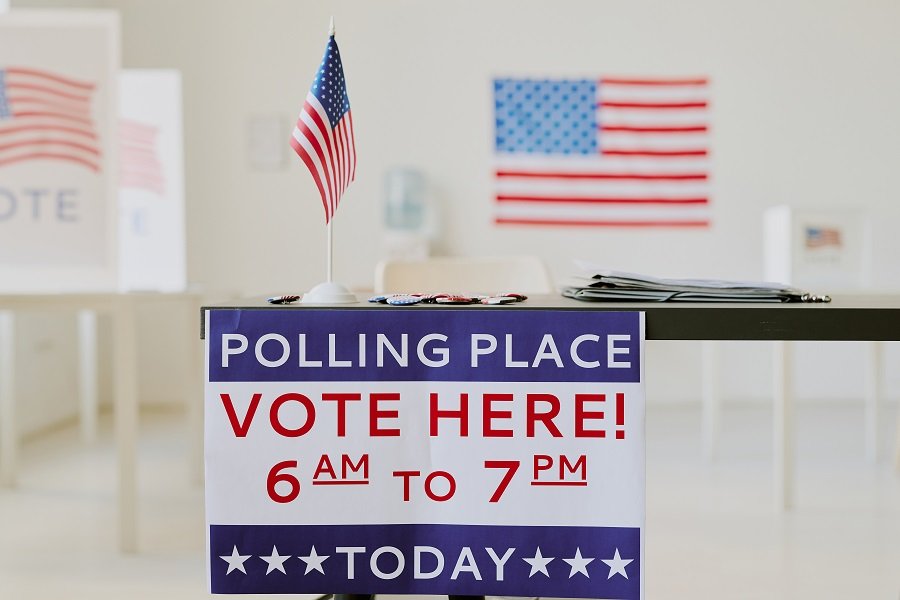
Food Banks Take on Voter Engagement
- foodfightadmin
- September 12, 2024
- Federal, Food Bank Support, Hunger In America
- adlps, ads pages
- 0 Comments
In an effort to tackle the root causes of food insecurity, food banks across the U.S. are engaging in voter outreach to empower the communities they serve. One such example is the Houston Food Bank, where Osvaldo Grimaldo serves as the inaugural Civic Engagement Specialist. When Grimaldo joined the team just over a year ago, he quickly discovered that many of the food bank’s agency partners and community members lacked basic knowledge about voting and resources. Of the 80% of agency partners interested in civic engagement, most had no experience with voter outreach. Meanwhile, over 100 surveyed residents expressed feelings of intimidation, distrust in the process, and the belief that their vote didn’t matter.
Despite these challenges, Grimaldo and Houston Food Bank have been leading the charge in transforming food banks into civic engagement hubs. While food banks are prohibited from endorsing political campaigns due to their 501(c)(3) status, they have unified around a message that the voices and votes of their communities are critical. The approach emphasizes that food banking alone cannot solve food insecurity; policy changes are essential.
JC Dwyer, an expert in food banking and civic engagement, notes that low voter turnout in communities served by food banks reduces political attention to their needs. “If those communities are expected to be places where elected officials can find votes, they’re going to have a stronger incentive to pay attention to those communities,” Dwyer explained. He emphasized that nonprofits can play a key role in boosting voter participation, which can increase turnout by 10 percentage points or more.
At Houston Food Bank, Grimaldo’s team developed a “partner-powered approach,” encouraging food pantries and other agencies to serve as “civic hubs.” These hubs receive mini-grants to offer both food and voting information, as well as help with registration. To protect its nonprofit status, Houston Food Bank partnered with the League of Women Voters to create co-branded materials. The food bank has also launched a leader development program to train community volunteers, ensuring that locals feel comfortable discussing voting in an approachable environment. “Because voting is such a heavy topic… we want our neighbors to feel at home,” Grimaldo said.
Once voter registration closes, the food bank plans to shift its focus to voter education. In partnership with the local elections office, they are developing a curriculum to teach community members about voting and will even install ballot machines at partner sites to help people practice voting, addressing fears around the process. Some civic hubs have expressed interest in becoming voting centers themselves.
The Houston Food Bank is not alone in these efforts. The Greater Chicago Food Depository has been working on voter engagement since the 2020 election. They’ve created bilingual materials and training programs to help their partners educate visitors about voter registration and the electoral process. “We know that our partners at food pantries, soup kitchens, and other food programs are trusted voices in their neighborhood,” said Camerin Mattson, Communications Manager at the food bank. “Who better to provide the resources for making sure people know about how to register to vote, when the deadlines are, and where polling places are.”
The work goes beyond voter registration. At Minnesota’s Second Harvest Heartland, Director of Public Affairs Zach Rodvold is focused on raising awareness about the connections between food insecurity and public policy. His team encourages voters to consider hunger when they head to the polls. At farmers markets and community festivals, Second Harvest has distributed flyers and held conversations about hunger in Minnesota, asking people to pledge to vote with hunger in mind. “First educate people on how bad things are… then draw the connection to public policy,” Rodvold explained.
Second Harvest Heartland’s goal is to cut hunger in Minnesota in half by 2030, and they’re using voter engagement to build political will. “The number of people in the legislature from any party who have hunger as one of their top priorities” is a key metric of success, Rodvold said. The food bank believes that by raising awareness, they can create more incentives for elected officials to address food insecurity. “We’re not going to charity our way out of hunger,” Rodvold noted, underscoring the need for policy change.
While voter engagement is crucial, it comes with challenges. Convincing agency partners of the legality and importance of the work can be difficult. Regional differences in voting rules, such as paper requirements and early registration deadlines in Texas, also present barriers. Despite these obstacles, organizations like Second Harvest Heartland are hopeful that more people will recognize the link between public policy and hunger relief.
Rodvold is optimistic about the future of voter engagement within food banking, stating, “We’re hoping that we can cut through the noise of the election and get people excited about solving one really big and important problem in our community.” By turning food banks into centers of civic engagement, these organizations are not only feeding their communities but also empowering them to take action and make their voices heard.








